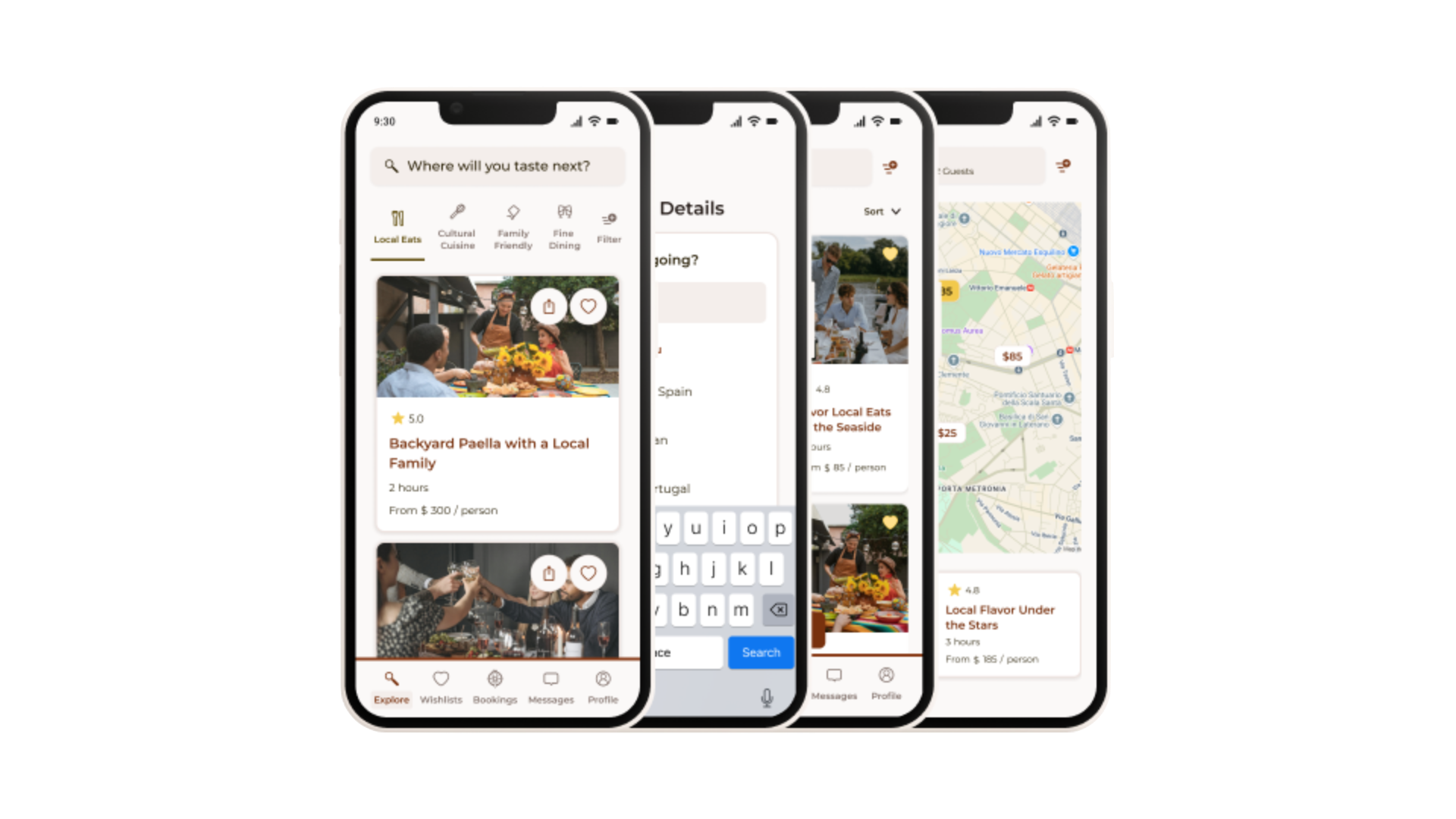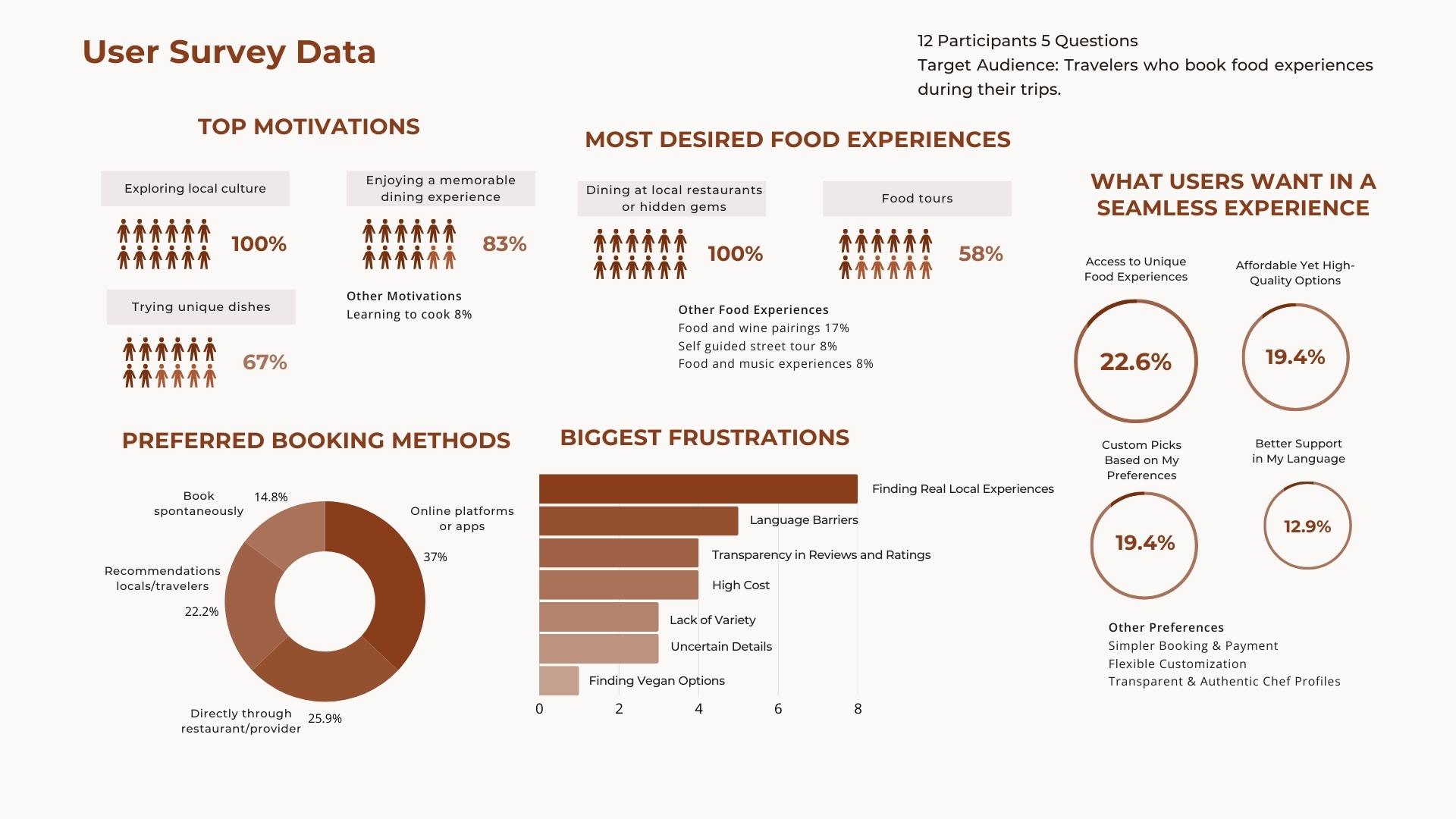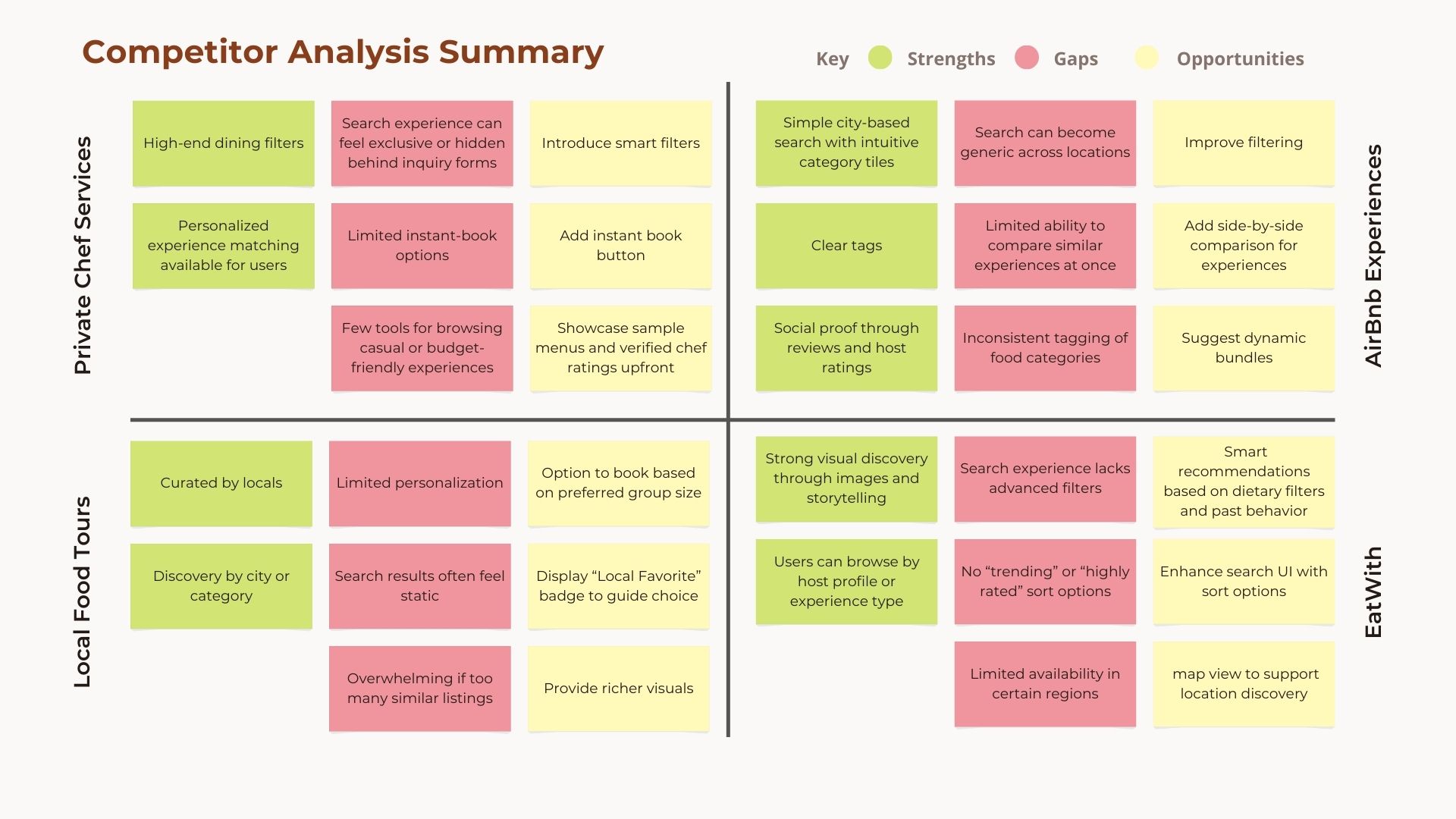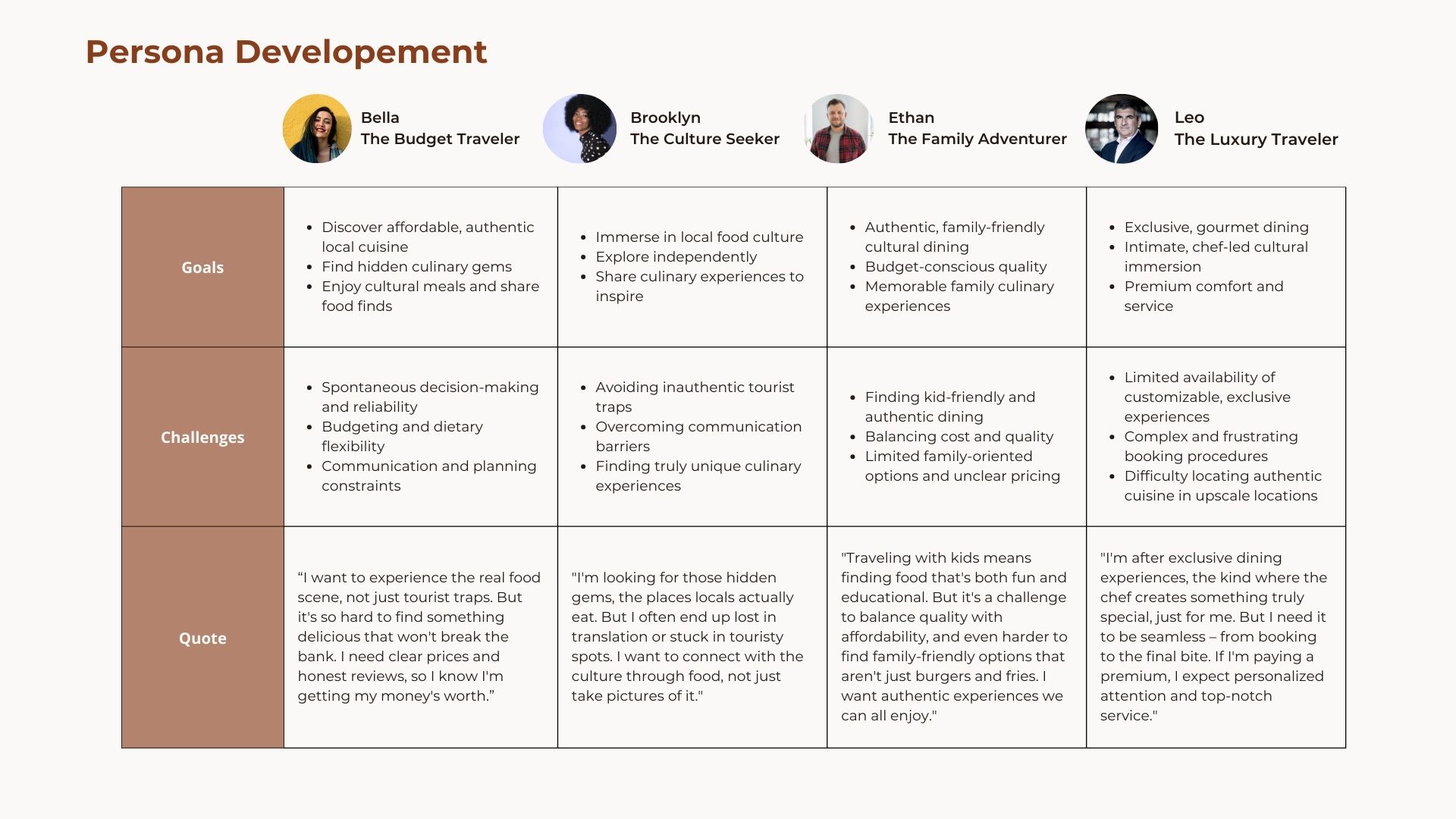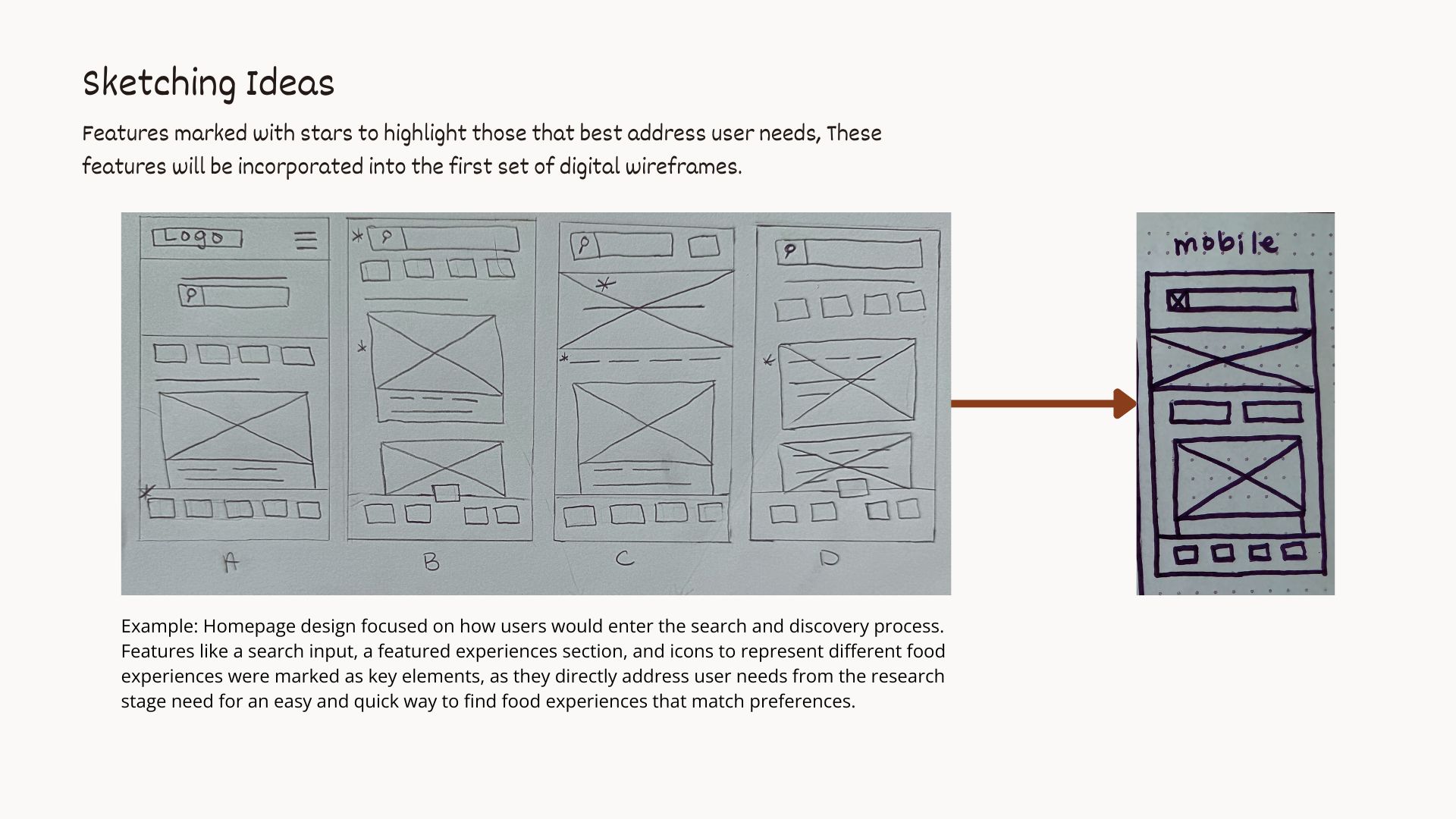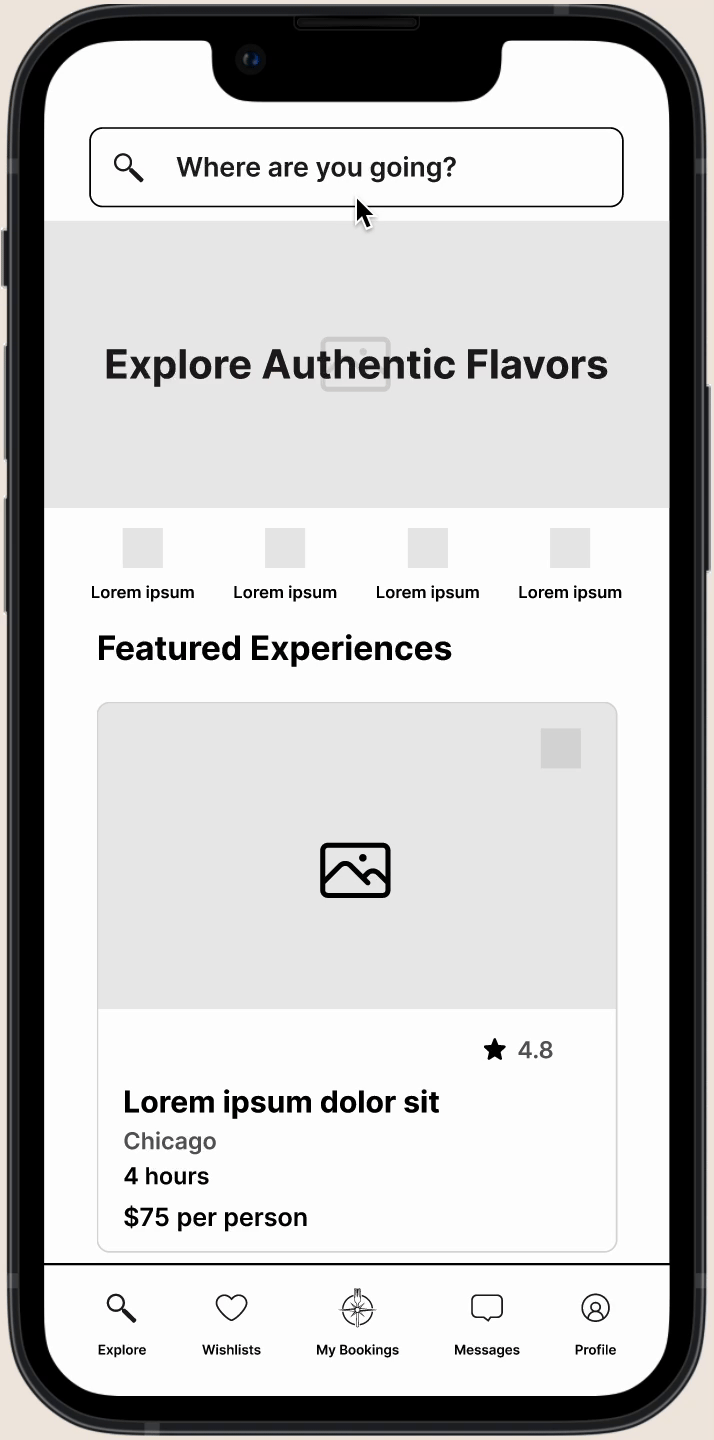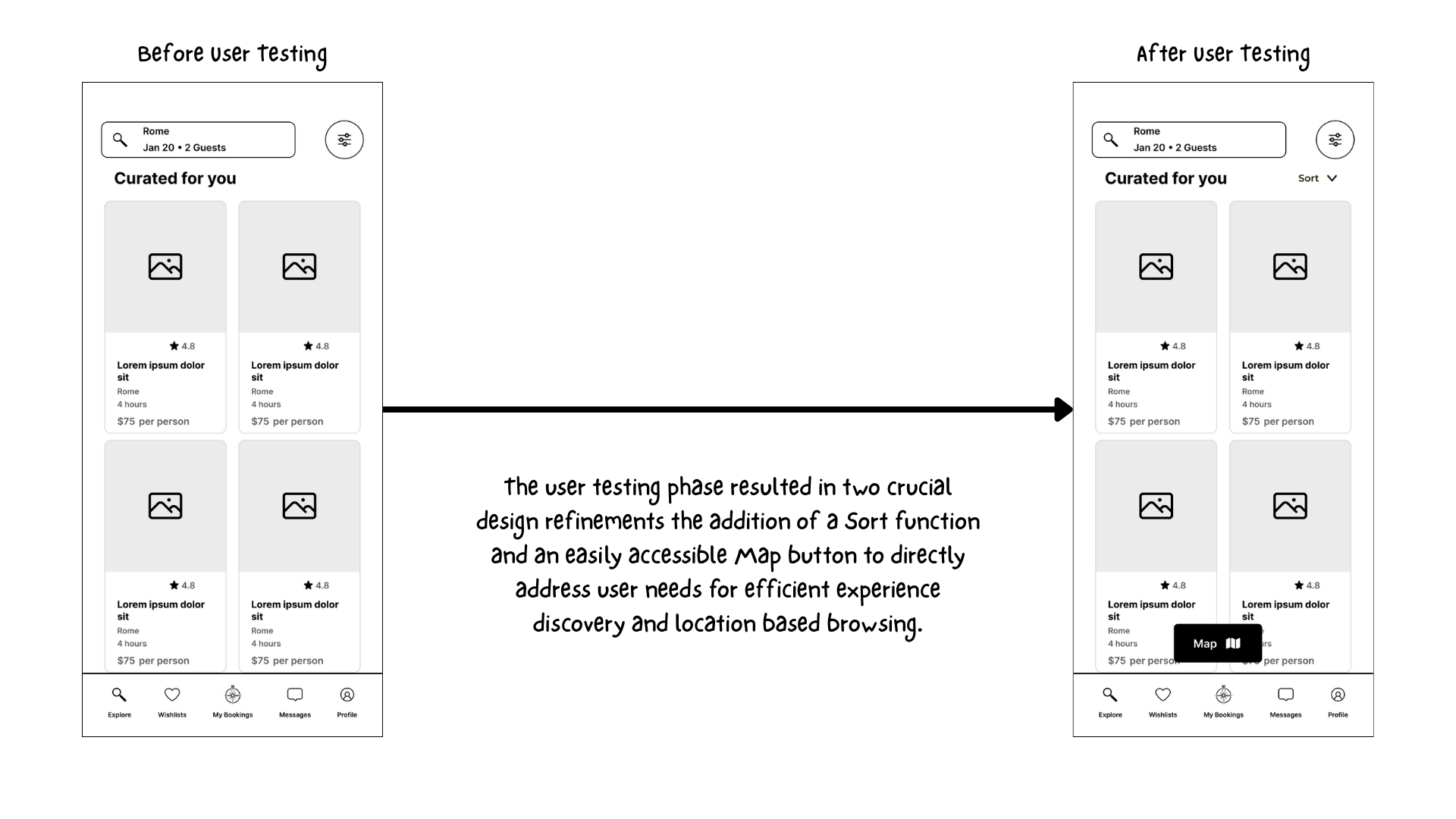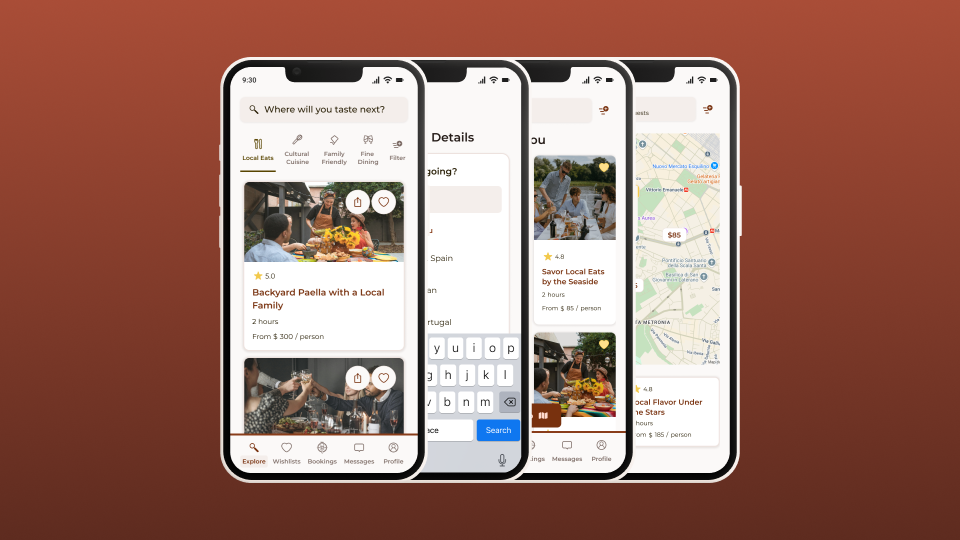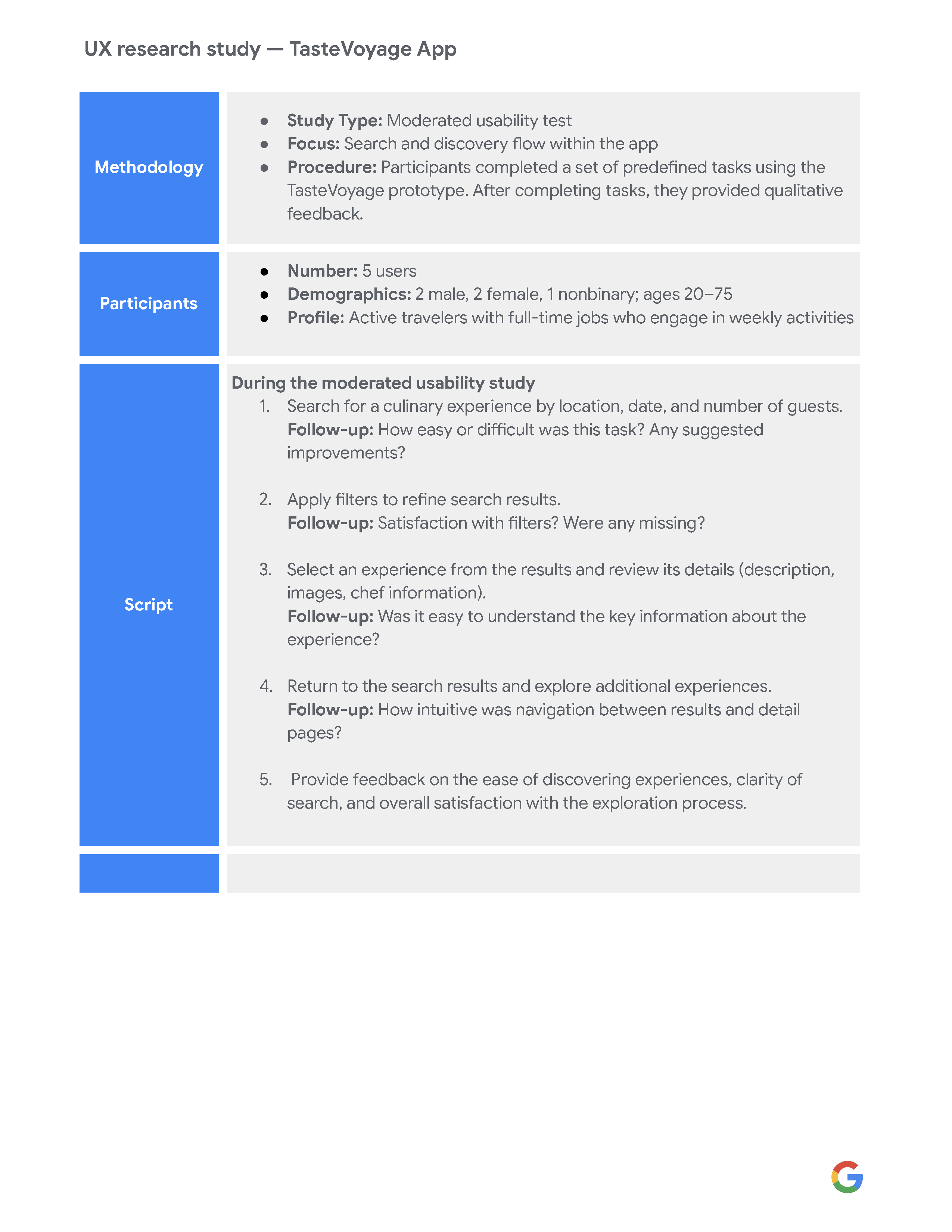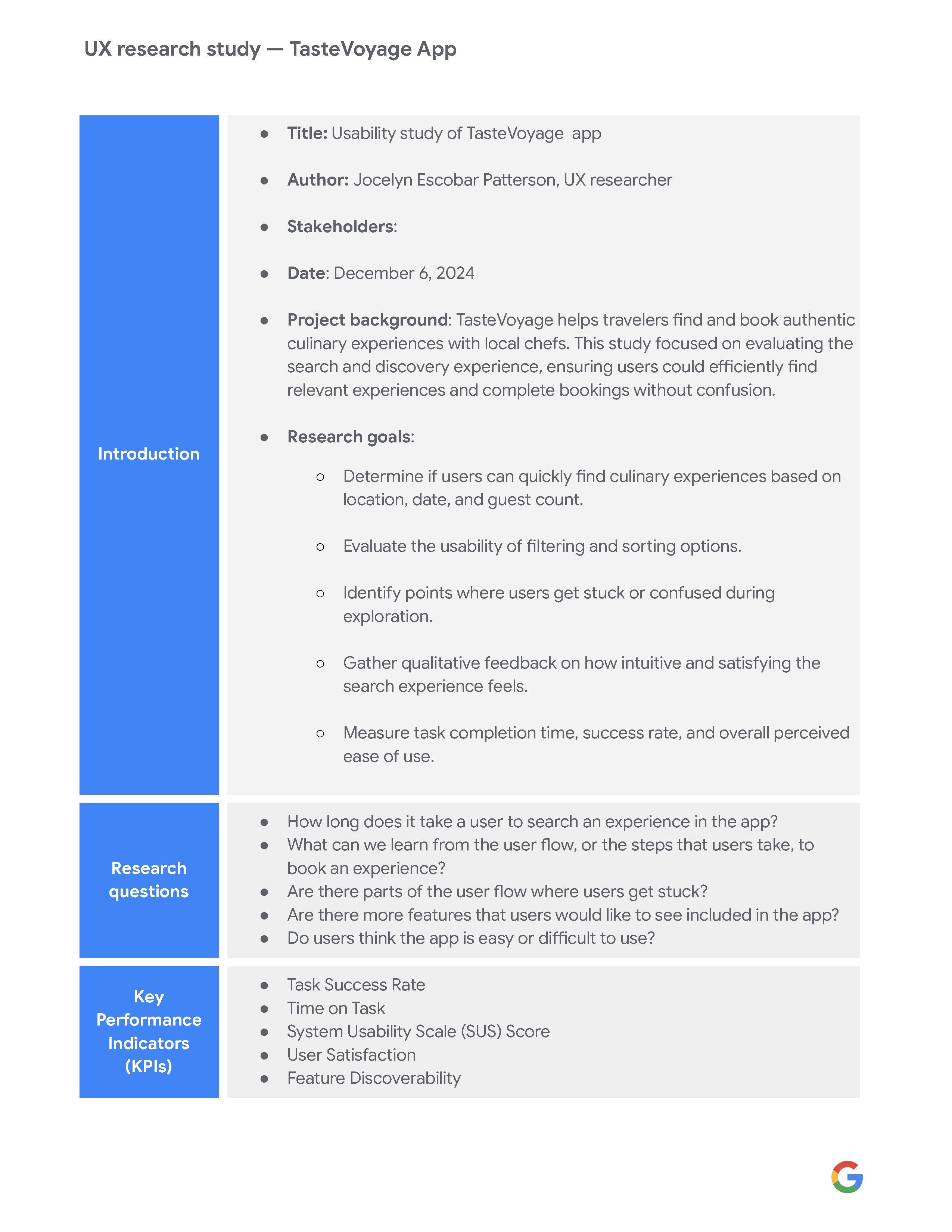Designing Culinary Journeys with Users in Mind
Led user-centered app design to enhance search and discovery of culinary experiences, including research, wireframes, usability testing, and high-fidelity prototypes for intuitive navigation.”
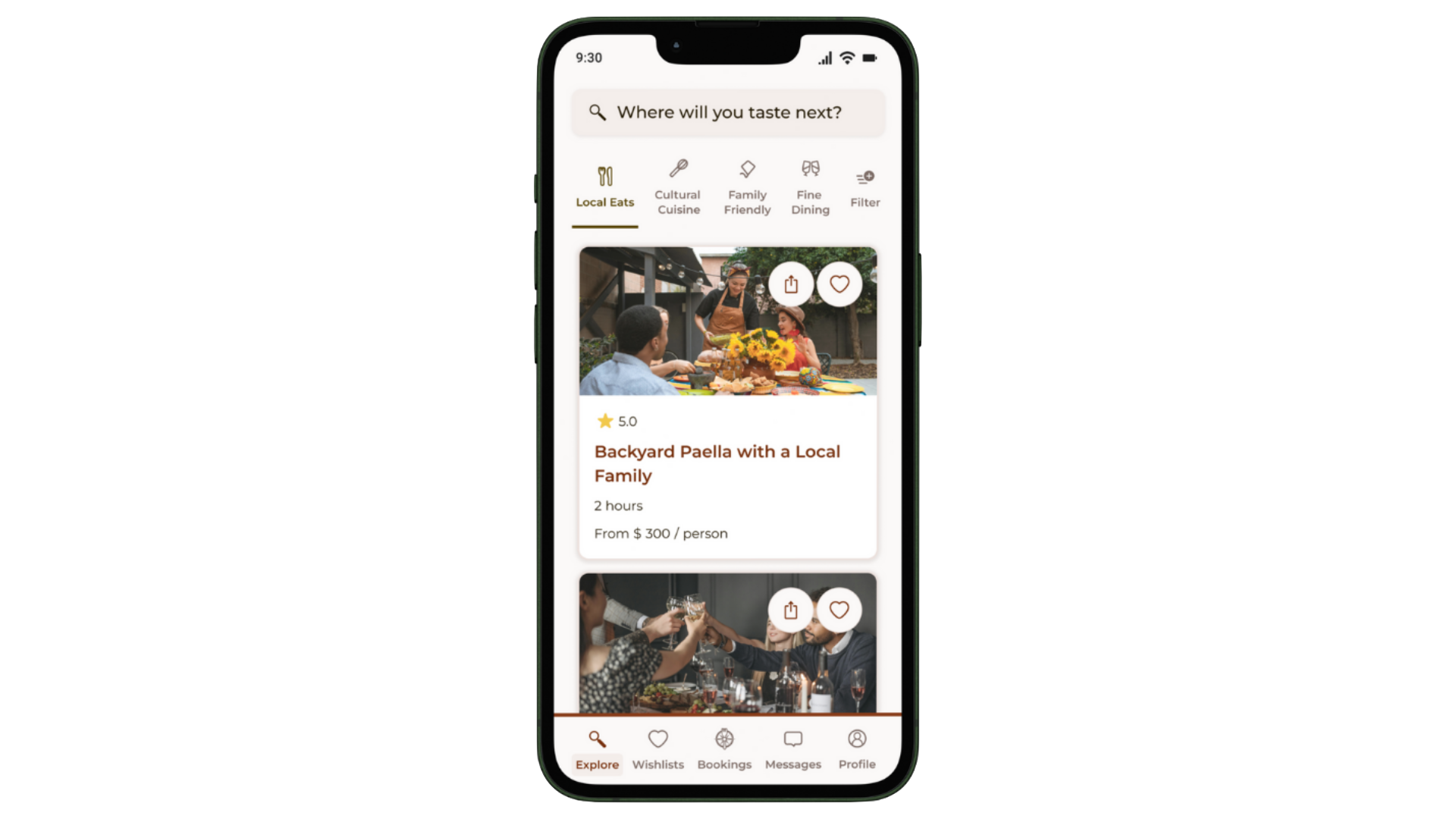
Client
Fictional – TasteVoyage
Role
UX/UI Designer
Timeline
6 Weeks
Deliverables
Phase 1 deliverables included user research and journey mapping, wireframes and an interactive prototype, UX recommendations for search and discovery, and usability testing insights.
